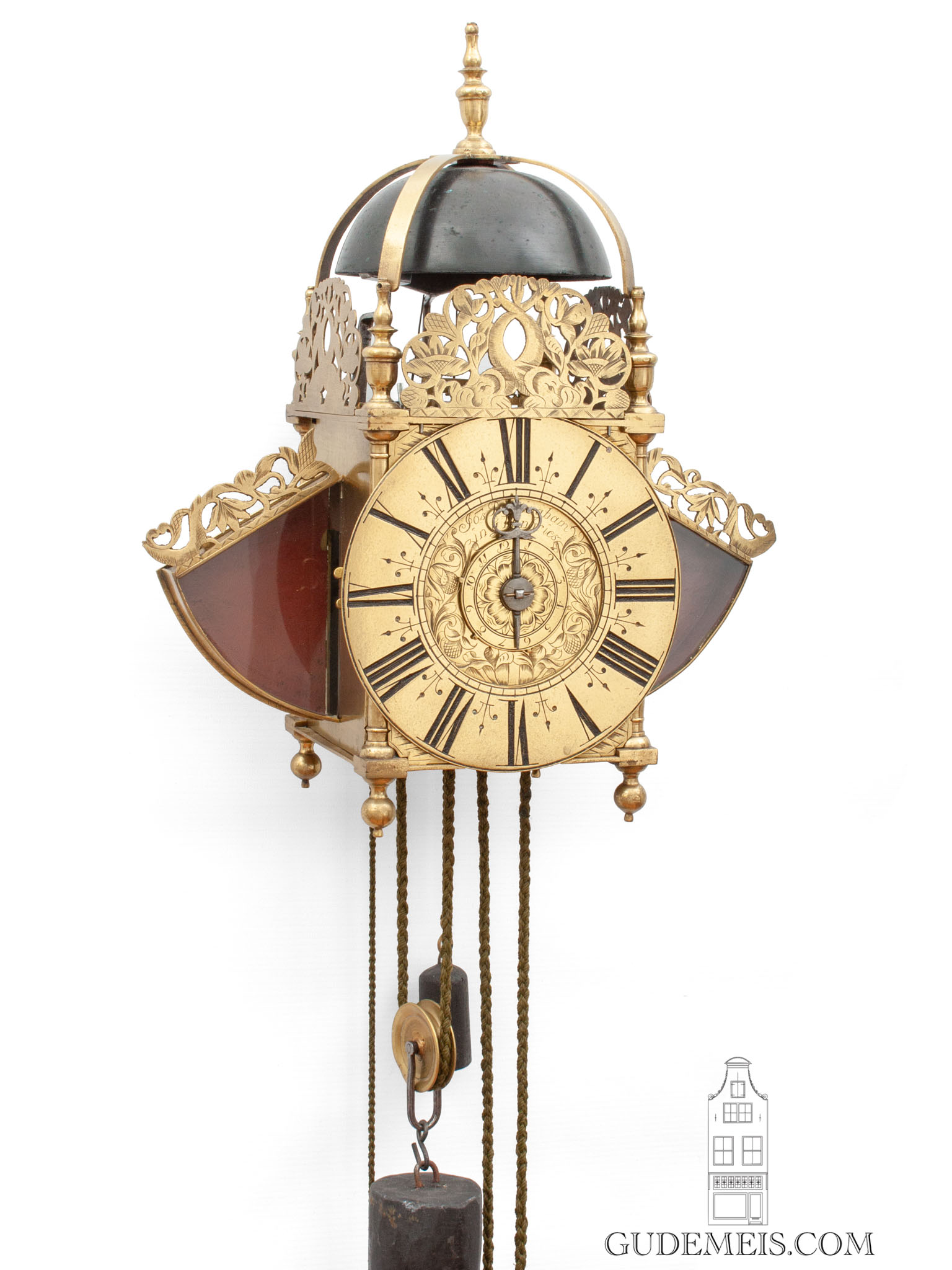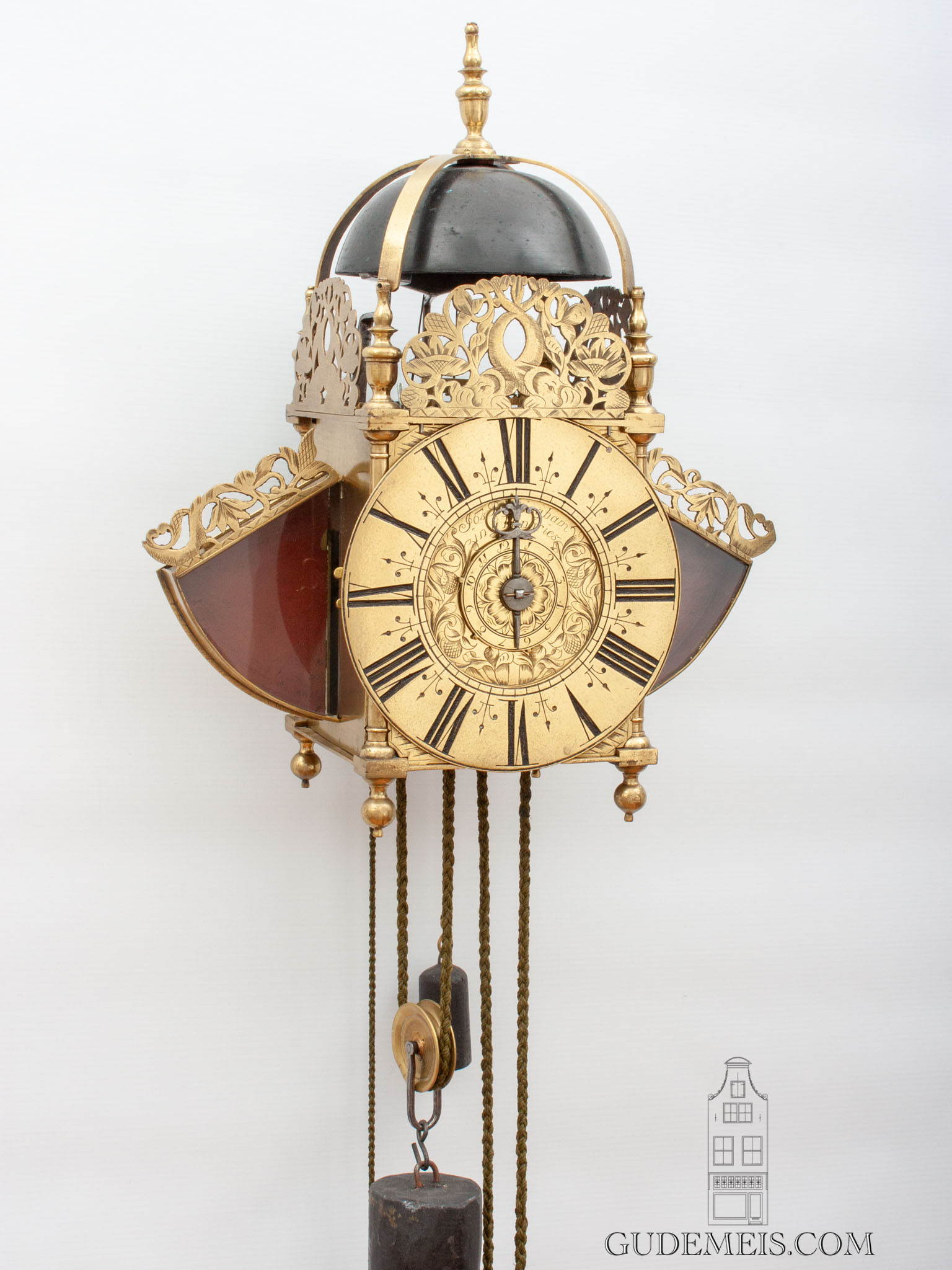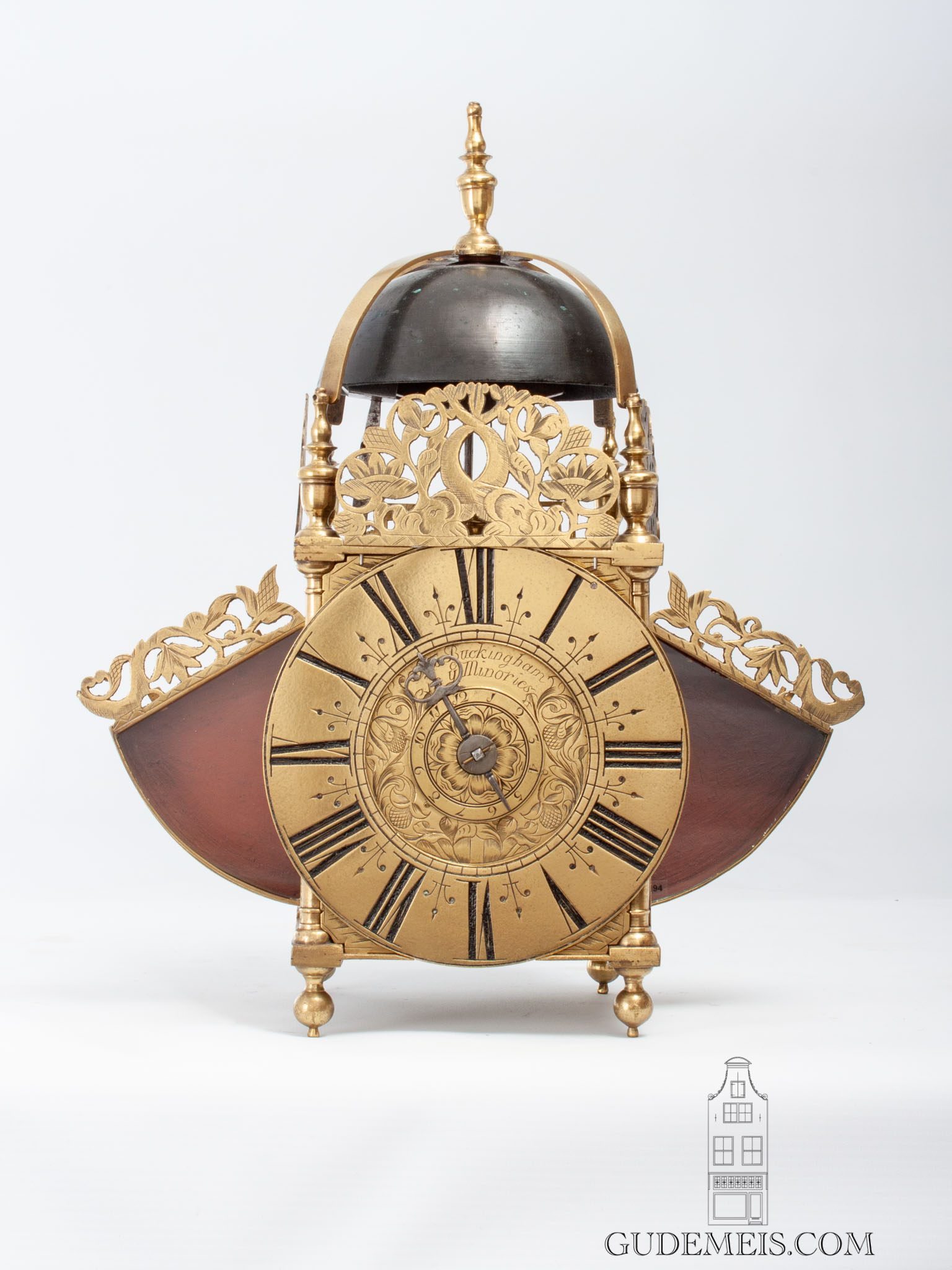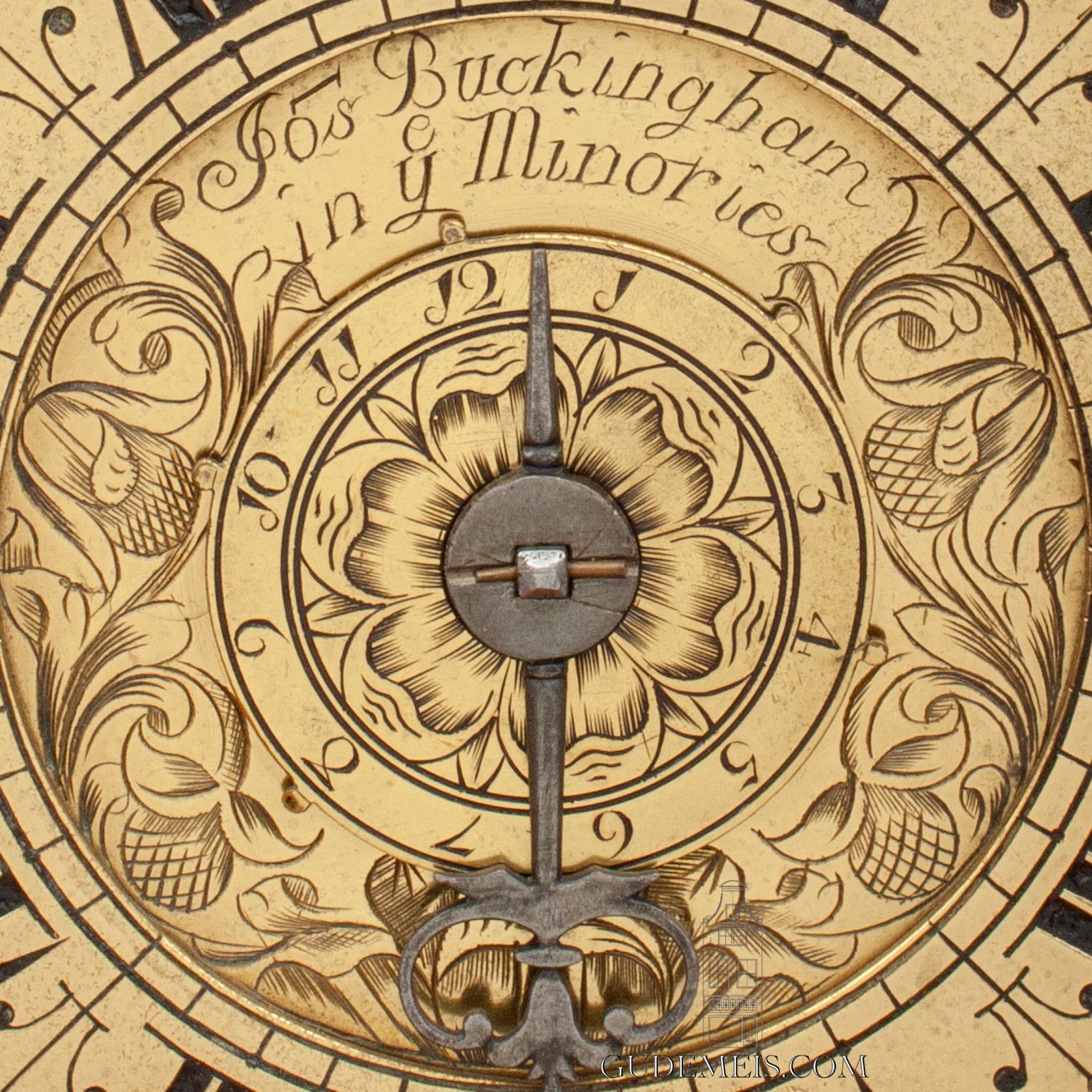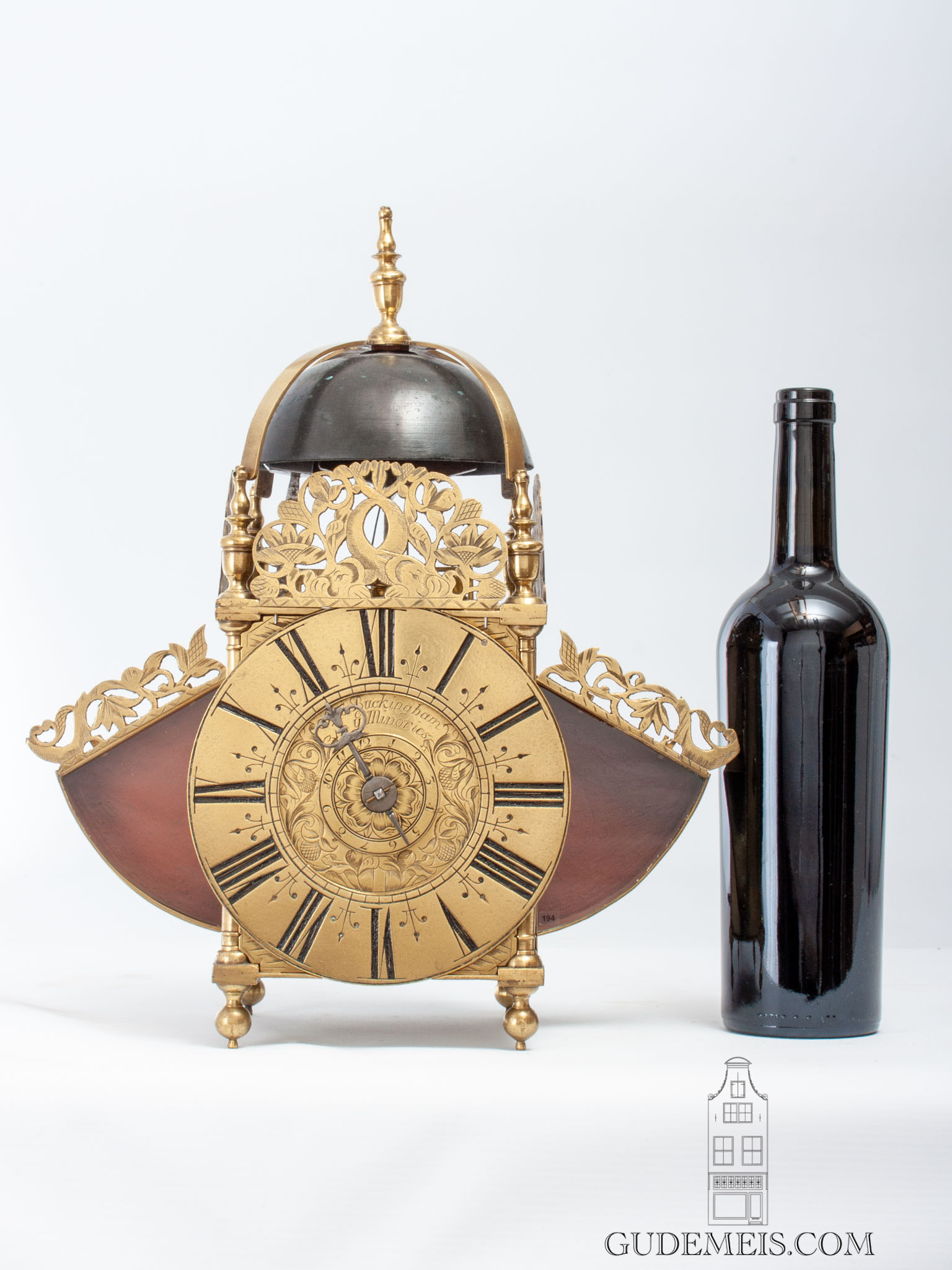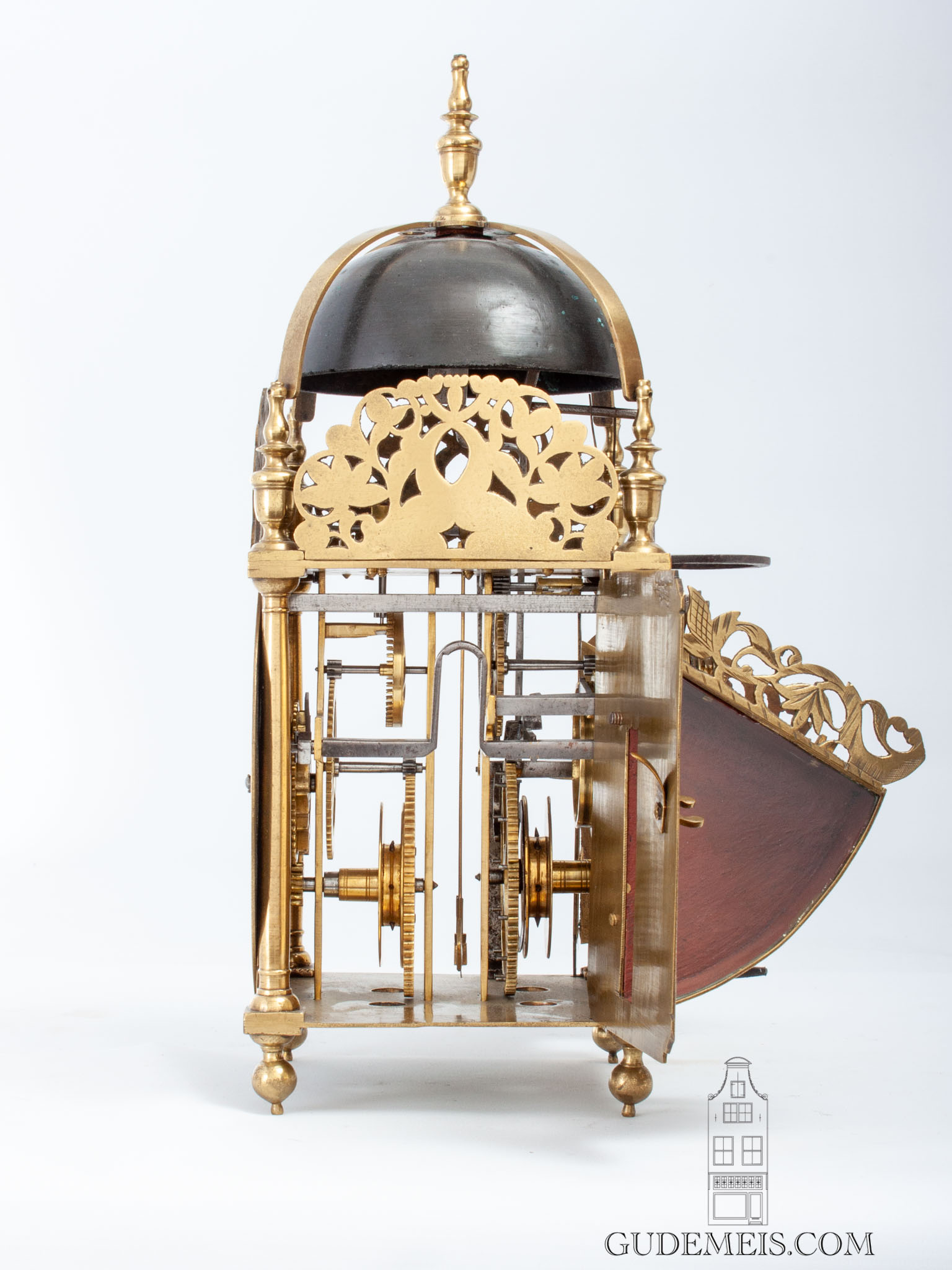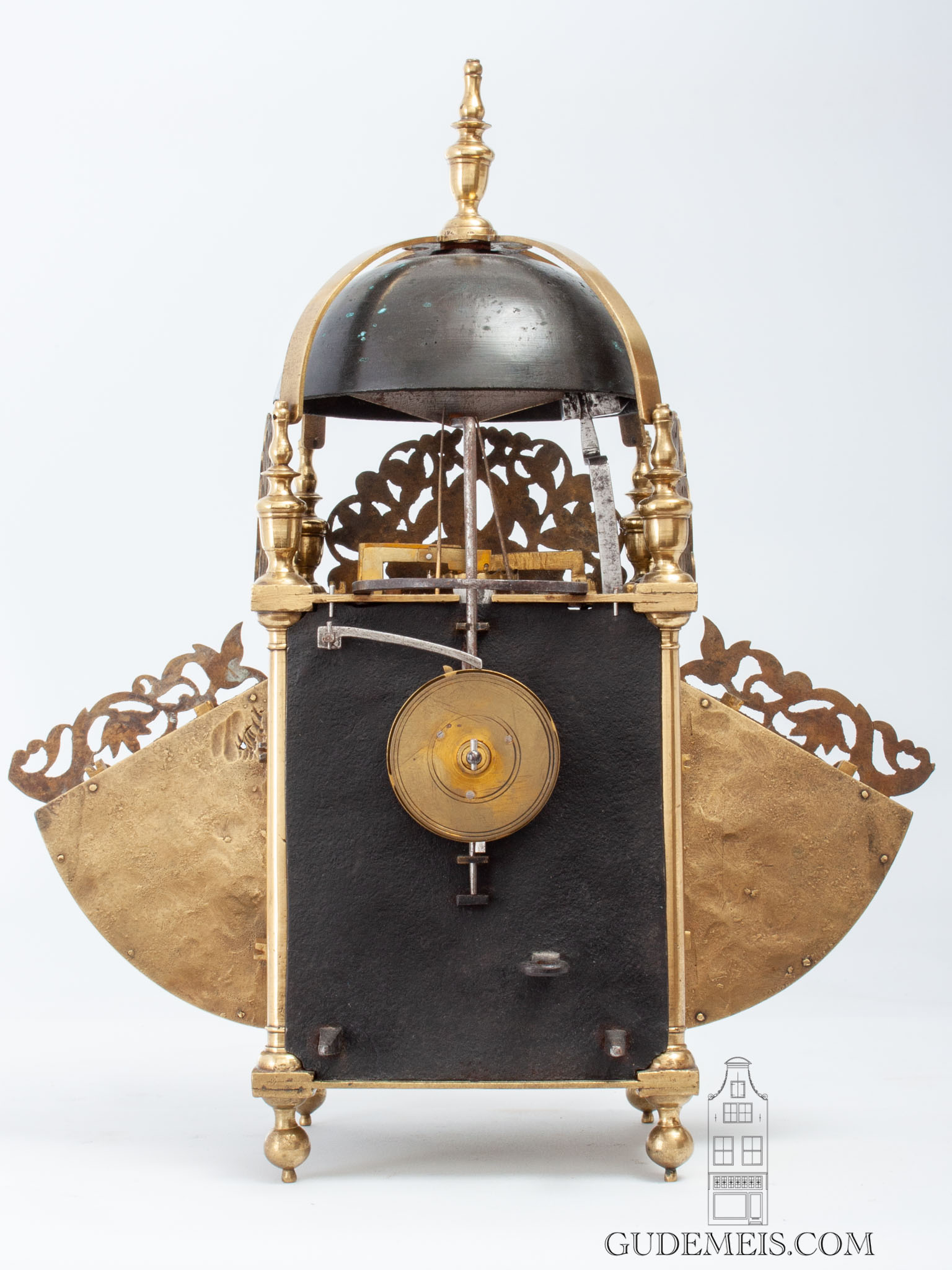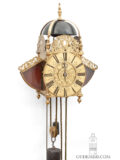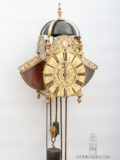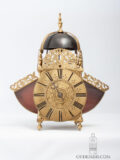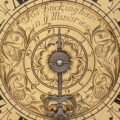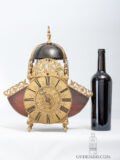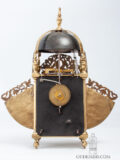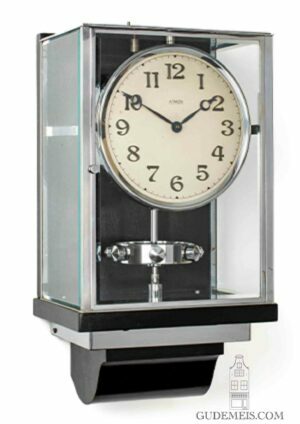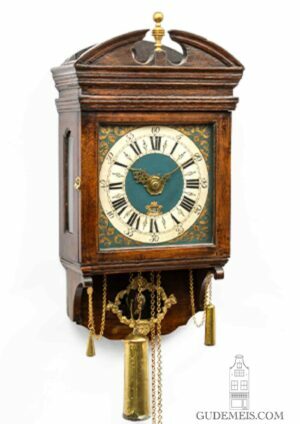An English brass lantern clock with wings, Joseph Buckingham, circa 1690.
Description
Lantern clock
The term lantern clock was probably introduced in the nineteenth century referring to the shape of these clocks. Others argue that ‘lantern’ comes from ‘laiton’, which means brass in French. This might well be the truth, since in wills and documents from the seventeenth century these clocks are often referred to simply as ‘brass clocks’ or ‘house clocks’. A sort of lantern clock was made in most European countries, but it is the English and French who are famous for this type of clock. In the third quarter of the seventeenth century a type of lantern clock evolved with the pendulum running in between the going and the striking train. Apparently, this was done to create space for an alarm mechanism at the back. The pendulum needed slots in the door to allow it to swing, and some slots were fitted with triangular extensions to block the entrance of dust through the glass panels that allow a view of the swinging pendulum. This not only made these clocks very distinct in form but also very attractive with the visible pendulum swinging. Some argue that these ‘wings’ never existed in the seventeenth century, and that they are later additions to make these clocks more attractive. Surely, not all these clocks with the pendulum swinging in the centre had wings, but a copper engraving from this period of a clockmaker’s workshop shows a wing lantern clock, proving that these clocks did exist. Besides the attractive shape and action of the pendulum, there is a beautiful signature between the engraved tulips on the dial. A fine clock with a lovely story.
Single hour hand
The engraved brass chapter ring has roman numerals. The engraved centre is adourned with flowers and signed Jos. Buckingham in ye Minories. The single hour hand is made of iron and the alarm disc of brass.
Verge escapement
The movement is driven by a weight on an endless cord and and is of day duration. The clock has verge escapement in combination with a pendulum swinging between the plates of the going- and striking trains. The pendulum bob has the shape of an anchor and is visible through the ‘wings’. The clock strikes the hours on a bell by means of a countwheel. The alarm that is mounted on the back plate also strikes on the bell.
‘dolphin fret’
The brass case has a bell cross with an urn finial mounted on four further urn finials. There is an engraved ‘dolphin fret’ to the front and plain frets to the sides. The doors are fitted with the ‘wings’ which allow the swinging pendulum to be seen. The whole is mounted by means of a hoop and spurs.
Joseph Buckingham
Joseph Buckingham is recorded working between 1685 and 1720 ‘at the Blackmoor’s Head and Dial, Minories. His earlier clocks have the addition ‘in ye Minories’.
